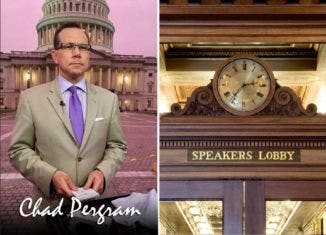Touching the Ump
A central rule prevails on big league diamonds when rhubarbs erupt on hot, muggy summer nights.
Players, managers and coaches are certainly allowed to argue with the umpire over a close call. Sure, they might get tossed out if they protest too vehemently or curse. But they had better not touch the umpire or spit on him.
Major League Baseball suspended St. Louis Cardinals catcher Yadier Molina for five games for bumping and spitting on umpire Rob Drake during a blowup last summer. Baseball sat down Cardinals’ shortstop Ryan Theriot for two games for making contact with umpire Mike Muchlinski last season as well. In 1996, Hall of Famer Roberto Alomar got the gate for five games for spitting in the face of umpire John Hirschbeck. And the National League suspended then-Cincinnati Reds manager Pete Rose for a month after he twice shoved umpire Dave Pallone in legendary 1988 donnybrook.
Touch the ump, and “y’er out.” For a while.
This is precisely why seven-time Cy Young Award-winner Roger Clemens finds himself in federal court these days.
Clemens bumped the ump.
In this case, the official was the U.S. Congress. And Clemens, being Roger Clemens, stormed out to argue the call.
The combustible Clemens certainly had his share of run-ins with the men in blue during his playing career. Among other incidents, Clemens went ballistic in Game 4 of the 1990 American League Championship Series when he played for the Boston Red Sox. He unleashed a barrage of profanities at umpire Terry Cooney. Cooney thumbed Clemens who had to be restrained. The Red Sox lost the game and the series to Oakland. So the American League suspended Clemens at the start of the 1991 season.
During his playing days, Clemens was known for challenging umpires when he thought they squeezed the black on him. In 2007, Former Senate Majority Leader George Mitchell (D-ME) compiled the “Mitchell Report,” studying alleged steroid use in the national pastime. The Mitchell Report charged that Clemens used steroids as a player. And so the “Rocket” charged out to dispute the call.
In February, 2008, Clemens testified under oath and in public at a House Oversight Committee hearing. Clemens told lawmakers he did not use performance enhancing drugs (PEDs). He denied accusations by former teammate Andy Pettitte that his former trainer Brian McNamee gave him shots of human growth hormone (HGH).
Prior to the hearing, Clemens told Congressional investigators behind closed doors that he hadn’t done anything wrong. And was insistent that then-House Oversight Committee Chairman Henry Waxman (D-CA) and ranking Republican Rep. Tom Davis (R-VA) hold an open hearing so he could defend himself against the allegations in public.
While almost any call in a baseball game could be subject for debate, one thing that earns an automatic ejection is arguing balls and strikes. A batter might give the umpire a brief look after a borderline call. A catcher might “frame” a pitch he thought caught the corner by momentarily holding his mitt in place. Players might ask “where was it?” when questioning the ump’s decision. But they’ll be heading for the showers if they push it much more than that.
Which, in baseball parlance, may be exactly what Clemens did.
Clemens not only argued the call. In essence what Clemens did was ask Congress to repeatedly show the pitch over and over again on the stadium JumboTron. And that’s to say nothing of those watching Baseball Tonight on ESPN. Clemens would then dissect the attitude and location of the pitch so that could see that he was right and the umpire was wrong.
It’s one thing for Clemens to come before Congressional investigators in private and tell his side of the story. It’s another to ask for a public hearing to plead your case.
The Oversight panel complied with Clemens’ request in February, 2008. And that’s where Clemens made contact with the umpires.
Waxman and then-Rep. Tom Davis (R-VA), the top Republican on the Oversight panel, sent the Justice Department a letter signaling that they thought Clemens failed to tell the truth about steroid use. Waxman and Davis informed federal investigators that Clemens testimony that he “never used anabolic steroids or human growth hormone warrants further investigation.”
The FBI agreed. And so did a federal grand jury in 2010. It indicted Clemens on charges of obstructing Congress and committing perjury during his Congressional testimony.
You can’t make contact with an umpire during an argument. And you can’t make bump Congress during a melee, either.
The current trial is Clemens second time through the legal batting order. Federal Judge Reggie Walton called the first game on account of prosecutorial misconduct last summer. But Walton dialed the bullpen for Clemens to warm-up his legal team for another cup of coffee with the federal justice system this spring.
On the mound, Clemens never took prisoners. After one-time home-run champion Hank Aaron questioned whether pitchers should be eligible to become the Most Valuable Player and win the Cy Young award, Clemens declared that he’d “crack his head open to show him how valuable I was.”
Once Mitchell released his report, Clemens called a January, 2008 press conference to deny the allegation. He then played a recording of a phone call between himself and Brian McNamee. During the call, McNamee didn’t rebut Clemens’ contention that he never used performance enhancing drugs. Later that same month, Clemens agent unveiled an 18,000 word report which aimed to statistically show that his client never benefited from alleged PED use on the field.
Clemens then told Congressional investigators in private that he didn’t use steroids.
Up until this point, like so many managers and players who dispute calls, Clemens had adhered to the game’s traditions. He gave the umpire a quizzical look. He framed the pitch. He asked “where was it?”
And then on February 13, 2008, in the eyes of Congress, Clemens went a little too far and made contact with the umpire.
Under oath, Clemens denied steroid use. He said he didn’t attend a party at the home of former player Jose Canseco where they discussed steroids. He said he never told Andy Pettitte he used HGH.
In baseball, this is known as showing up the umpire.
In the eyes of Congress, this is called committing perjury.
But even lawmakers don’t get to decide whether Clemens told the truth or not.
In the Bigs, it’s routine for players to appeal discipline meted out by Major League Baseball. Only this time, there’s no players’ association. There’s no meeting with the commissioner in his posh office on Park Avenue.
In this case, 12 jurors and four alternates will determine Clemens’ fate. A supermarket cashier who isn’t a sports fan. A former elementary school teacher who keeps track of golf and tennis. A baker who never heard of Clemens. A man who likes hockey and called the Congressional hearings “excessive.” Another who once attended a Washington Senators game at old Griffith Stadium. An unemployed man who likes sleeping. A female “sharpshooter” with the Washington Metropolitan Area Transit Authority.
These jurors will decide if Clemens deserves punishment for making contact with the umpire.
Just last week, the NBA suspended Rajon Rondo of the Boston Celtics for two games after he bumped an official. In soccer, it’s unknown if Spain’s “La Liga” might take action against Granada’s Dani Benitez after he threw a sport drink bottle at a referee following a match against Real Madrid. The bottle clipped the official on the cheek.
You can’t touch the ump. And soon Roger Clemens will know whether he crossed that sacred line when he testified more than two years ago.

